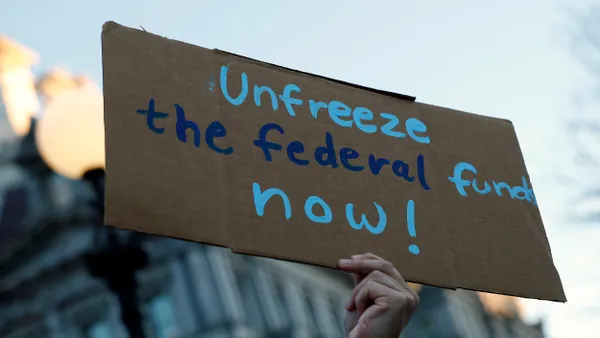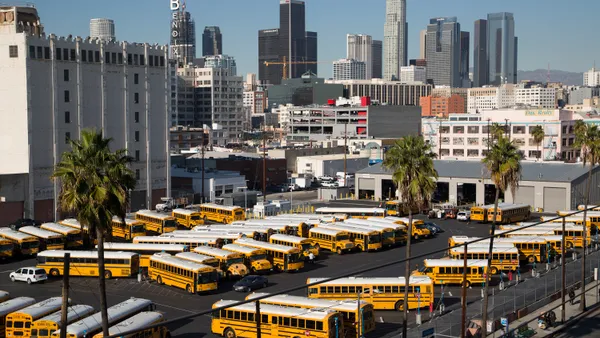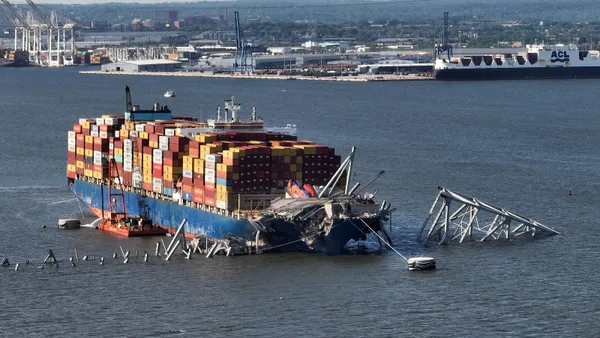Quick Facts
Washington, DC
-
Mayor:
Muriel Bowser
-
Population:
680,000+
-
Size:
68 mi²
Guiding principles:
Resilience, sustainablity, equitability, transparency and collaboration.
Biggest recognition of the year:
Earned the U.S. Green Building Council's first LEED for Cities Platinum certification.
Outlook:
In 2018, the city will prioritize optimizing mobility, achieving Vision Zero and improving public safety, among other initiatives.
Washington, DC is of course known for the White House, the Capitol and the Supreme Court, even for its culture and landscape. But there's an underlying element of the District that maintains its efficiency as a tourist destination for travelers from around the globe: it's a hotbed of innovation, technology and connectivity.
In 2017, Washington welcomed a wealth of new, smart developments: It installed North America's first "intelligent" wastewater pumping system, equipped city trash cans with sensors, adopted five dockless bike-share pilot programs, installed free Wi-Fi across 17% of the city and was even named the world's first LEED Platinum city. These projects and more are what have motivated DC Chief Technology Officer Archana Vemulapalli to push toward a "smarter DC."
Interactive Graphic
Components to being City of the Year
Hover over a circle to learn more about each element.
Click on an icon to see more
Free Wi-Fi is now available in approximately 17% of the city, and leaders are pushing to cover 25% by next year with a particular focus on the National Mall.
Among other initiatives, the city is analyzing criminal code reform, evaluating gun intelligence and recently completed a comprehensive study on body-wear cameras, all to promote public safety.
The city installed North America's first "intelligent" wastewater pumping system this year, has made progress on a $2.6 billion Clean Rivers Project and is looking into smart water fountains to improve water quality.
DC was named the world's first LEED Platinum city in August, and is also on track to derive at least 50% of the entire city's electricity from renewable resources by 2032.
The city launched new transit methods to access the Southwest Waterfront, advanced the Vision Zero initiative through data analytics, and adopted five dockless bike-share pilot programs. New ride-share services, including Via and Maven, also entered the DC market.
DC equipped city trash cans with sensor tech to collect data and decrease rodent populations. The city also rolled out a commercial waste compactor pilot program, and worked aggressively to expand recyclable items and move toward zero waste.
"We have taken a multi-pronged approach toward how we want to push out the smart city vision," Vemulapalli explained. She said focusing on the city's core values — to be resilient, sustainable, equitable, transparent and collaborative — has helped the city guide the investments and decisions that are made for smart growth.
Smarter DC, an interagency group comprised of dozens of city departments including the Office of the CTO (OCTO), District Department of Transportation (DDOT), the Department of Energy & Environment (DOEE) and DC Water, is the collaborative effort that oversees these investments.
"Our SmarterDC initiative is about building a city that is more sustainable, more efficient, and more inclusive," said Mayor Muriel Bowser. "Through our collaborative approach to technology, Washington, DC has become the capital of inclusive innovation. In the years to come, we look forward to creating an even safer, stronger, and smarter city for all our residents and visitors."
Vemulapalli explained that the participating departments have no additional allocations or resources for the smart city projects — instead, the city encourages existing staff to solve problems in a smart way, overall. "As a technology agency [OCTO], we have a lot of really smart people here, so it was about being strategic in how we utilize them and empower them."
If anyone comes to you and tells you they’re a smart city and they don’t have a strong resiliency strategy, and there’s not efforts focused on resiliency, that’s not an inherently smart city.
—Archana Vemulapalli, CTO District of Columbia
A significant component of Smarter DC that has helped advance the city's public safety and resiliency strategies is The Lab @ DC, which was designed to leverage scientific insights to test policies and establish evidence-based governance. Since opening in July, The Lab has already rolled out a number of projects to promote citywide resiliency, including a study that tested if behaviors are influenced by police body cams.
"We have a huge effort for resiliency. That's crucial," she explained. "If anyone comes to you and tells you they're a smart city and they don't have a strong resiliency strategy, and there's not efforts focused on resiliency, that's not an inherently smart city. If your city can't bounce back, it doesn't matter what else you invest in."
Looking Forward
Moving into the coming year, Vemulapalli has highlighted three main drivers for development: mobility, public safety and the environment. She hopes for DC to become more strategic in how to leverage data in order to reach Vision Zero; to drive more resiliency efforts through the NIST public safety innovation program; and to work with the DOEE on "next level" planning now that the city is LEED Platinum certified.
"We are all doing great things," she said. "Let's take all the great work and then let's look at how we can efficiently hit even greater goals by being much more smart on how we leverage technology and how we use those insights in meaningful way."
Outside of collaborating internally to hit these goals, many cities try to emulate neighboring municipal projects that have been deemed successful. Yet when asked which cities DC will look at to develop new solutions and ideas, Vemulapalli quickly answered, "I think other cities should emulate us."
And after this year, they likely will.












